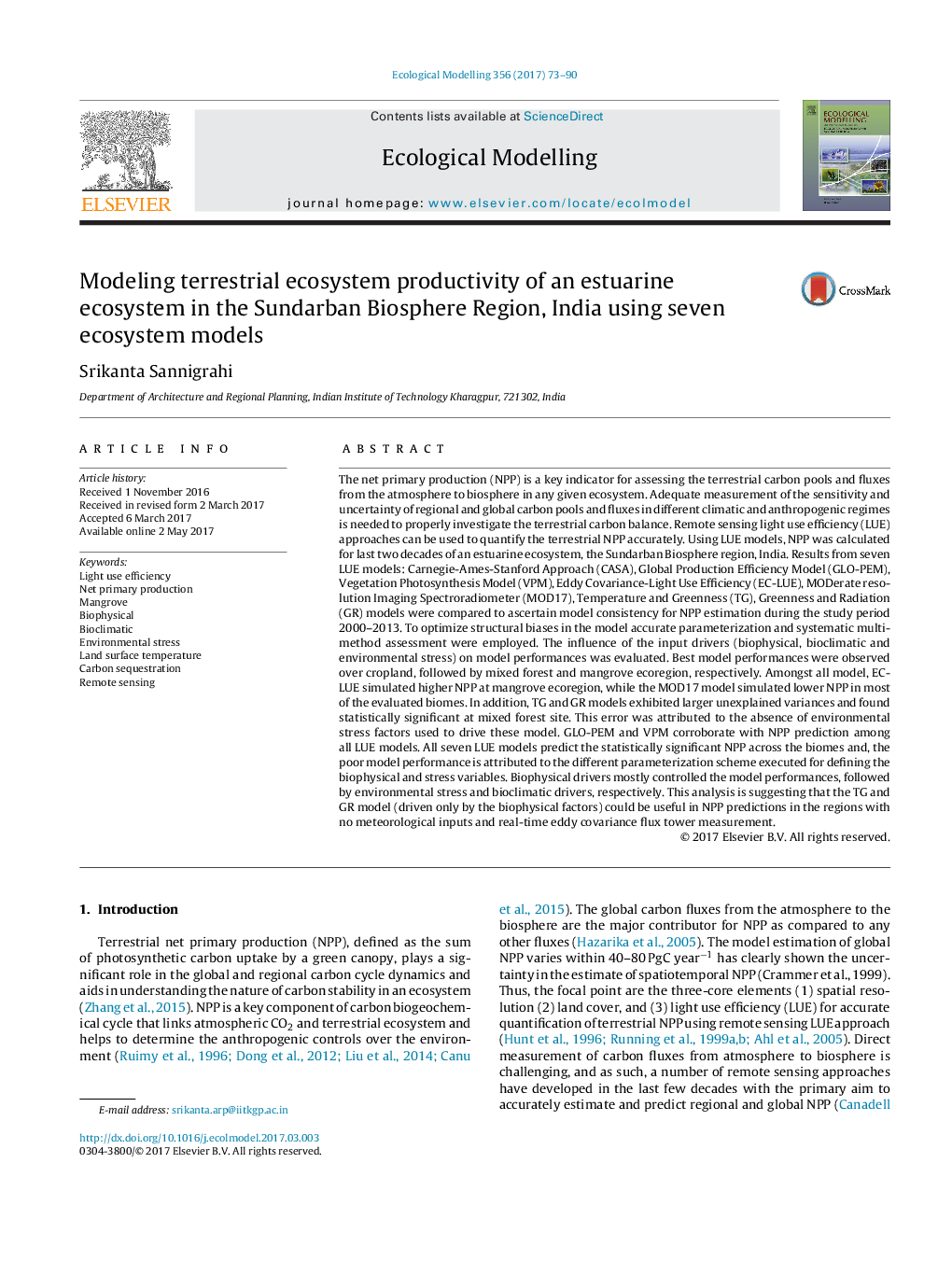| کد مقاله | کد نشریه | سال انتشار | مقاله انگلیسی | نسخه تمام متن |
|---|---|---|---|---|
| 5742204 | 1617391 | 2017 | 18 صفحه PDF | دانلود رایگان |
- Seven ecosystem models: CASA, EC-LUE, GLO-PEM, VPM, MOD17, TG, and GR were incorporated to evaluate the model consistency and performances.
- Three group of parameters: bioclimatic, biophysical, and environmental stress variables were employed to examine the climatic and environmental stress impact on NPP.
- The research result indicates reasonable spatial and temporal agreement between the NPP derived from seven LUE models.
The net primary production (NPP) is a key indicator for assessing the terrestrial carbon pools and fluxes from the atmosphere to biosphere in any given ecosystem. Adequate measurement of the sensitivity and uncertainty of regional and global carbon pools and fluxes in different climatic and anthropogenic regimes is needed to properly investigate the terrestrial carbon balance. Remote sensing light use efficiency (LUE) approaches can be used to quantify the terrestrial NPP accurately. Using LUE models, NPP was calculated for last two decades of an estuarine ecosystem, the Sundarban Biosphere region, India. Results from seven LUE models: Carnegie-Ames-Stanford Approach (CASA), Global Production Efficiency Model (GLO-PEM), Vegetation Photosynthesis Model (VPM), Eddy Covariance-Light Use Efficiency (EC-LUE), MODerate resolution Imaging Spectroradiometer (MOD17), Temperature and Greenness (TG), Greenness and Radiation (GR) models were compared to ascertain model consistency for NPP estimation during the study period 2000-2013. To optimize structural biases in the model accurate parameterization and systematic multi-method assessment were employed. The influence of the input drivers (biophysical, bioclimatic and environmental stress) on model performances was evaluated. Best model performances were observed over cropland, followed by mixed forest and mangrove ecoregion, respectively. Amongst all model, EC-LUE simulated higher NPP at mangrove ecoregion, while the MOD17 model simulated lower NPP in most of the evaluated biomes. In addition, TG and GR models exhibited larger unexplained variances and found statistically significant at mixed forest site. This error was attributed to the absence of environmental stress factors used to drive these model. GLO-PEM and VPM corroborate with NPP prediction among all LUE models. All seven LUE models predict the statistically significant NPP across the biomes and, the poor model performance is attributed to the different parameterization scheme executed for defining the biophysical and stress variables. Biophysical drivers mostly controlled the model performances, followed by environmental stress and bioclimatic drivers, respectively. This analysis is suggesting that the TG and GR model (driven only by the biophysical factors) could be useful in NPP predictions in the regions with no meteorological inputs and real-time eddy covariance flux tower measurement.
Journal: Ecological Modelling - Volume 356, 24 July 2017, Pages 73-90
